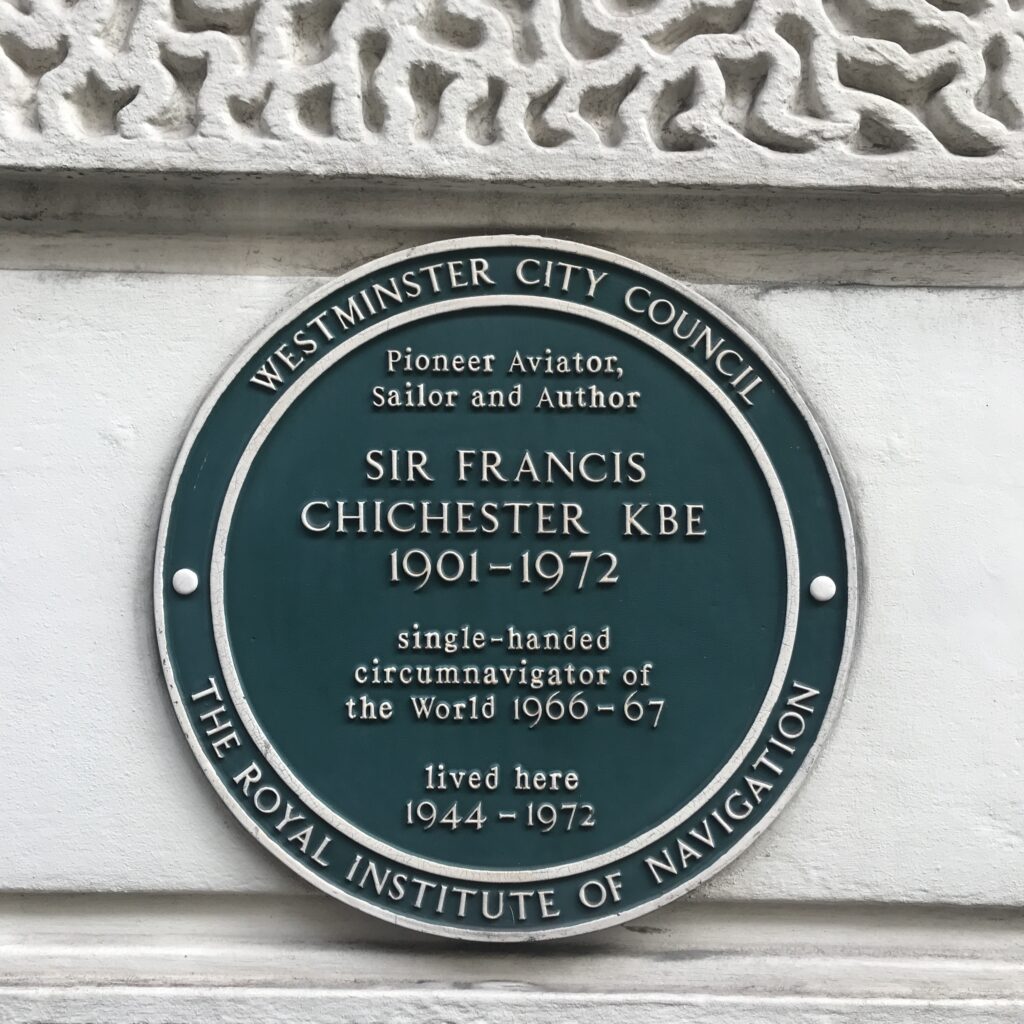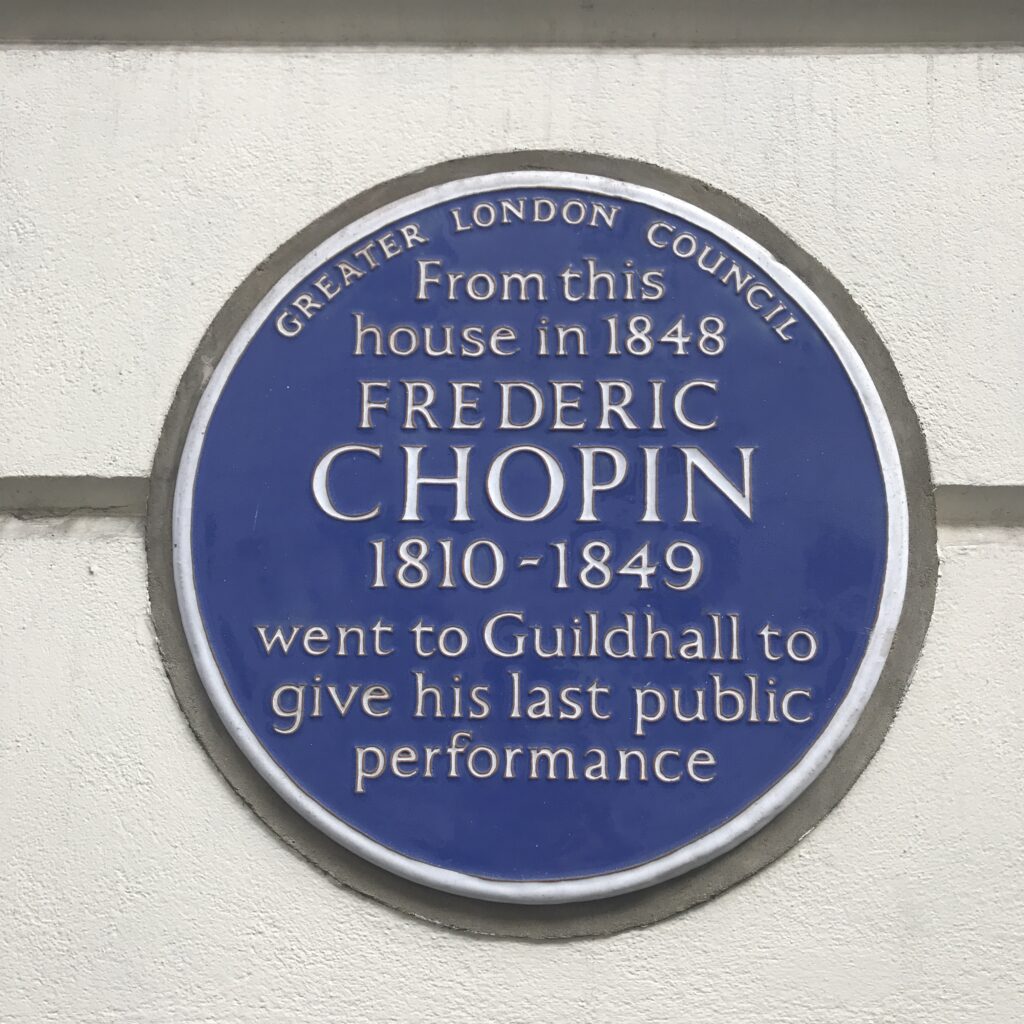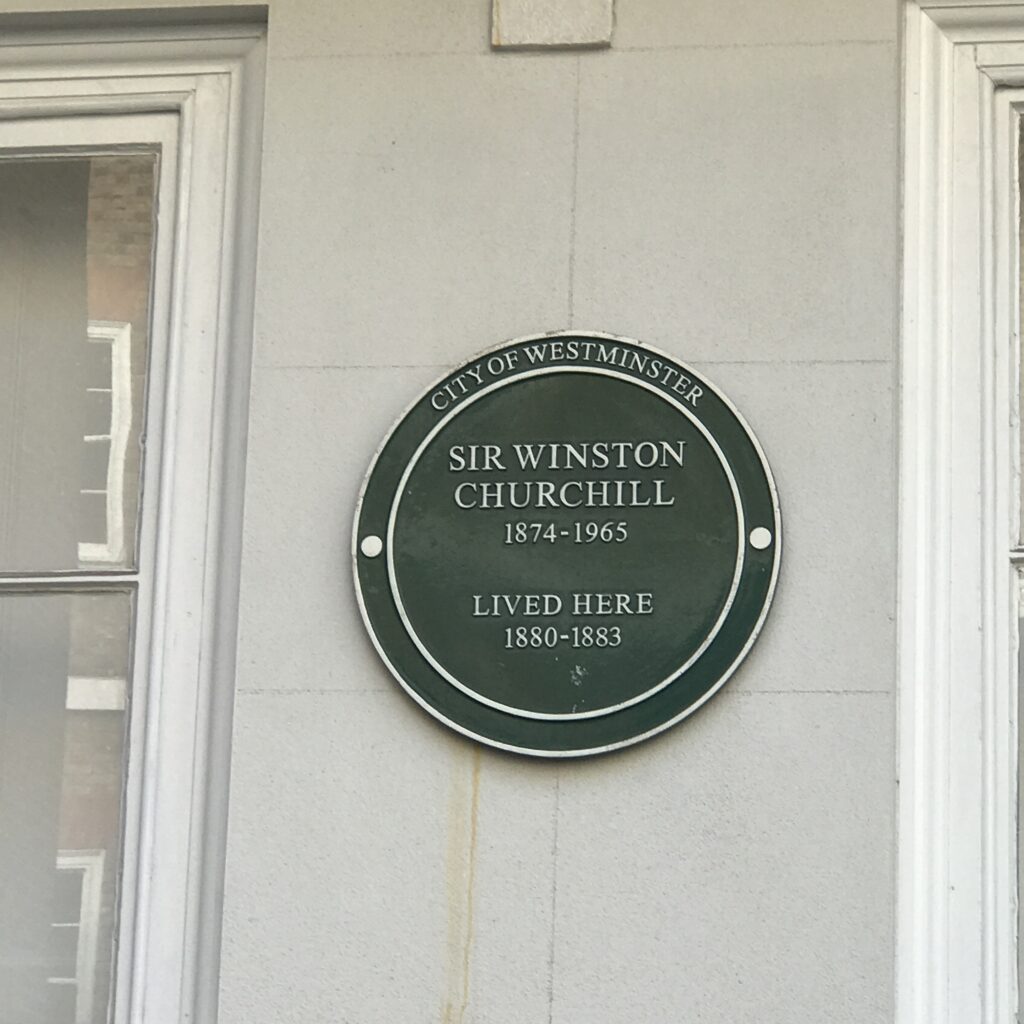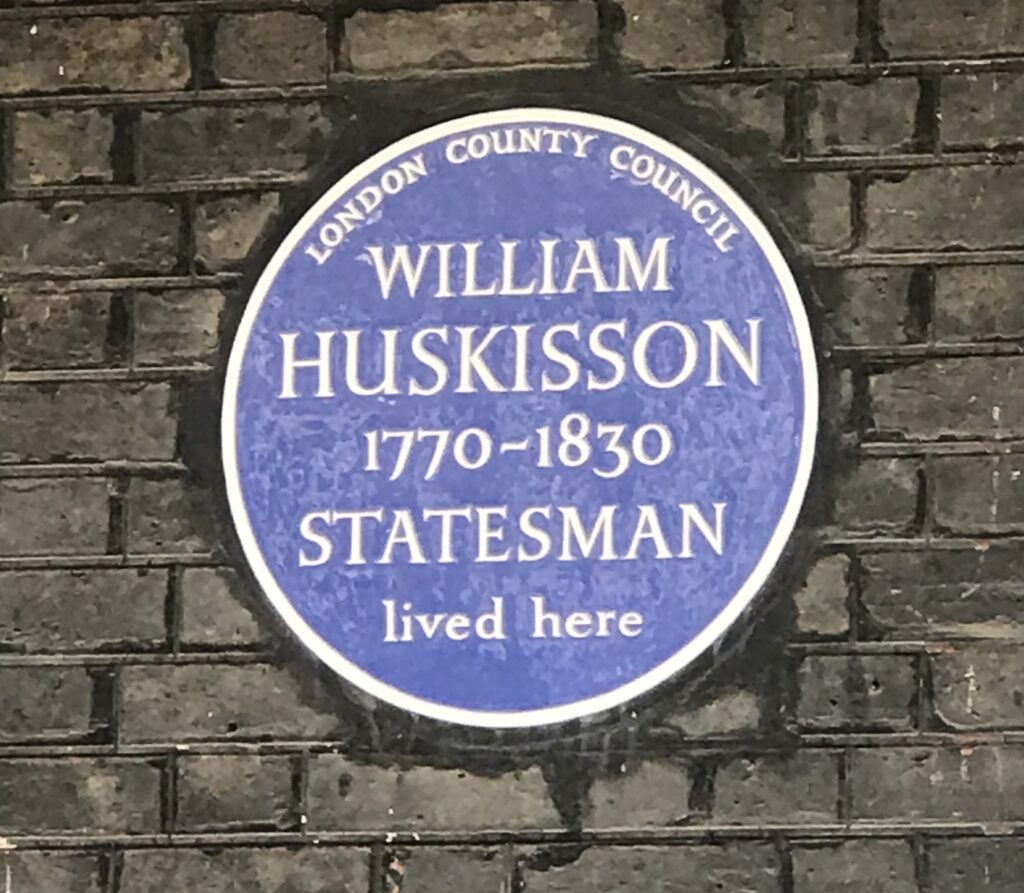
St James’s Place, which cuts between St James’s Street and Green Park, has the modernist/brutalist Target House at one end, and the vast neo-classical pile of Spencer House overlooking the park at the other. It also has an interesting selection of blue (and other) plaques, demonstrating the range of famous residents that have occupied houses in the street.
First along the way at number 4 is the Polish composer and pianist Frederic Chopin who, in November 1848, “went to Guildhall to give his last public performance” – a recital for Polish emigres. Shortly after this a very ill Chopin returned to his home in Paris where he died in the autumn of the following year.
Then we get a green plaque to Sir Francis Chichester, “single-handed circumnavigator of the world”, To confess my ignorance, I’d thought that Chichester had led a nondescript and obscure life for 65 years before deciding in retirement to sail around the globe, but I was as wrong as it is possible to be. In 1929 he flew a Gypsy Moth biplane* to Australia in ‘just’ 41 days, he was the first person to fly solo across the Tasman Sea, and the first person to land a plane on Lord Howe Island and Norfolk Island. He also won the first single-handed transatlantic yacht race in 1960.
(*the yacht in which he sailed around the world was Gypsy Moth IV)
HM the Queen knighted him after his circumnavigation, using (it is said, but many historians are dubious) the sword with which her predecessor and namesake Elizabeth I had knighted Francis Drake in 1581 after he had become the first English sea captain to sail around the world.
Another green plaque a little further down commemorates Winston Churchill, although as he was only five years old when his father Randolph had leased the property he can’t really be said to have had much say in the matter.
And next door is a blue plaque to William Huskisson “statesman” an early 19th century politician and widely believed to be the first person to be killed in a railway accident. He was run down by Stephenson’s ‘Rocket’ on the opening of the Liverpool and Manchester Railway in September 1830. The website ‘London Remembers’ contains the glorious sentence: “Huskisson had previously escaped from another unlikely accident, when a horse fell on him during his honeymoon”, the story of which will have to wait for another day.




